
Remember when you’d Google something and actually click through to websites? Yeah, those days are fading fast. Now when I search for “best pizza recipe,” Google’s AI just tells me the answer right there on the page. No clicking required.
The numbers tell the whole story: 13.1% of all U.S. desktop queries now trigger Google’s AI-generated overviews — up from 6.5% in January. That’s not just a trend, that’s a complete shift in how people find information.
I’ve been tracking this change for months, and here’s what I keep seeing: businesses with perfectly optimized content suddenly becoming invisible. Their SEO is solid, their content is great, but nobody’s finding them anymore. Why? Because they’re still playing by the old rules while everyone else has moved to AI-powered search tools like ChatGPT, Claude, and Perplexity.
The solution? Answer Engine Optimization (AEO) — and it’s completely different from everything you know about SEO.
Table of Contents
-
The Answer Engine Revolution is Here
-
How AEO Actually Works (It’s Not What You Think)
-
Making Your Content AI-Ready
-
The Nuts and Bolts (And How to Know It’s Working)
-
Advanced Strategies for Staying Ahead
-
Where Most People Get Stuck (And How to Fix It)
-
What This Means for Your Business
TL;DR
-
AI tools like ChatGPT and Perplexity are replacing Google searches — your content needs to be optimized for AI citation, not just search rankings
-
AEO focuses on becoming the source material AI quotes, not driving clicks to your website
-
Content structure, accuracy, and clear attribution matter more than keyword stuffing
-
You need new ways to measure success — citation frequency beats traffic numbers
-
Multi-modal optimization (images, videos, audio) is coming fast
-
Technical setup requires structured data and AI-readable formatting
The Answer Engine Revolution is Here
Here’s the thing about revolutions — they happen gradually, then all at once. We’re in the “all at once” phase right now.
More than half of all Google searches now end without anyone clicking a link, with nearly 65% of searches ending without a click because the answer was given directly on the results page. People aren’t browsing anymore. They’re asking AI for direct answers.
Think about your own behavior. When you need to know something quickly, do you still scroll through ten different websites? Or do you just ask ChatGPT? Exactly.
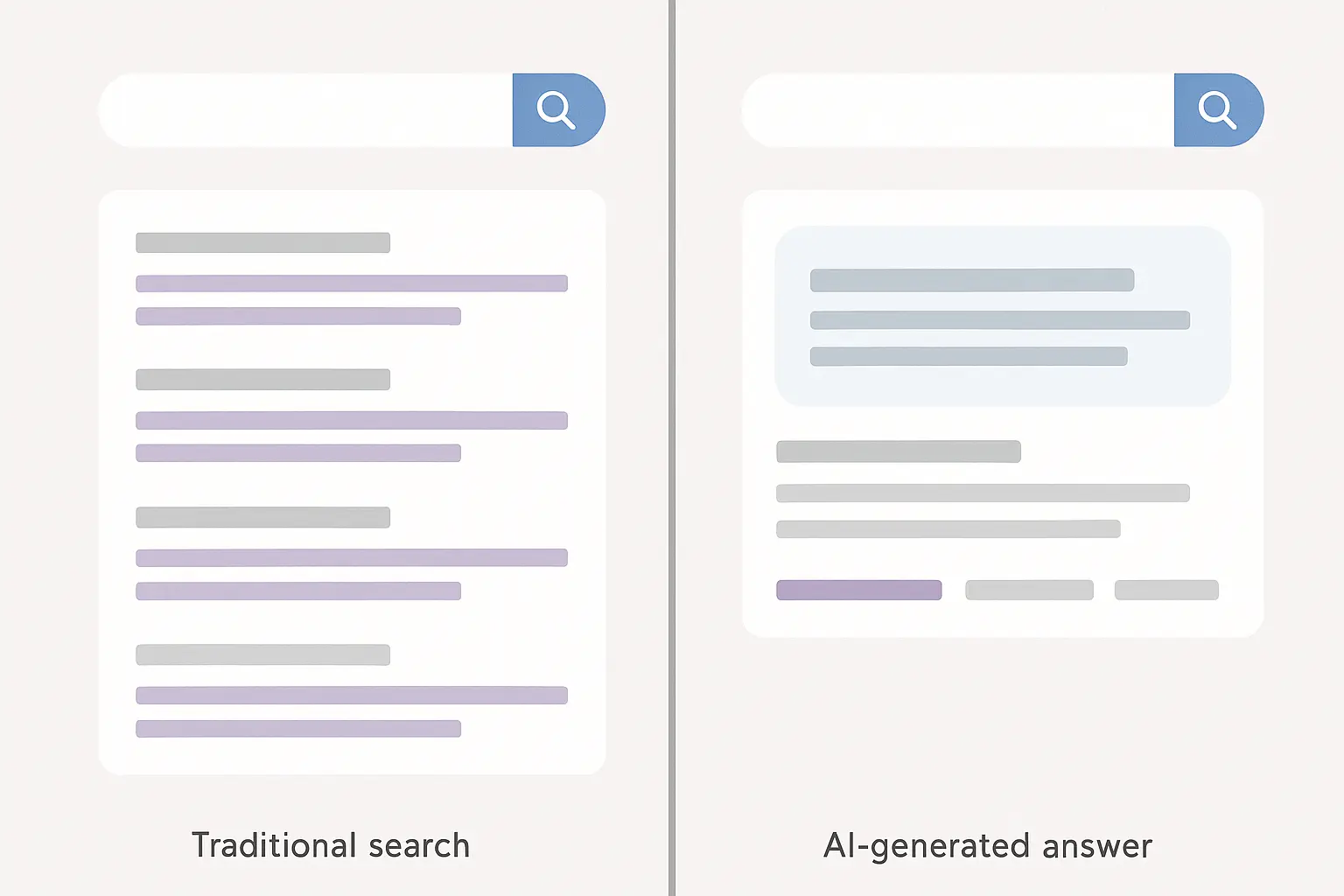
What This Actually Means for Your Business
AEO is the practice of structuring your content so AI tools quote you when they answer questions. Instead of trying to rank #1 on Google, you’re trying to become the trusted source that ChatGPT, Claude, or Perplexity references.
It’s like being the expert that journalists call for quotes, except the journalists are AI systems and they’re answering millions of questions every day.
The urgency is real. An Armonk-based marketing company is using human intelligence to help its clients become visible on the internet by adapting to the needs of artificial intelligence through strategies known as Answer Engine Optimization (AEO) and Generative Engine Optimization (GEO). Smart companies are pivoting now, while most of their competitors are still figuring out what’s happening.
Why Everything You Know About SEO Just Changed
Traditional SEO was about gaming algorithms to rank higher. AEO is about becoming so obviously authoritative that AI systems can’t ignore you.
Here’s the fundamental difference:
|
Old School SEO |
Answer Engine Optimization |
|---|---|
|
Focus on ranking positions |
Focus on being quoted as the source |
|
Optimize for Google’s crawlers |
Optimize for AI comprehension |
|
Goal: Get clicks to your website |
Goal: Become the go-to expert |
|
Keyword density matters |
Content clarity and accuracy matter |
|
Build links for authority |
Create citation-worthy content |
|
Success = traffic numbers |
Success = how often you’re quoted |
The Players You Need to Know
The big names right now are ChatGPT, Claude, Gemini, Perplexity, and the AI features rolling out in Bing and Google. Each one has different preferences for what they cite and how they present information.
Perplexity loves recent, well-sourced content with clear citations. ChatGPT prefers comprehensive explanations with good structure. Claude tends to favor content with clear headings and bullet points.
Let’s say you run a local bakery. When someone asks ChatGPT “How long does sourdough take to make?” you want your step-by-step guide to be the source it quotes, not some random food blog. That’s AEO in action.
The Behavior Shift That Changed Everything
People don’t want to hunt for answers anymore. They want the answer, right now, from a source they trust.
The scale of this shift is massive: Over 400 million people use OpenAI’s ChatGPT or related products for information every week, and Microsoft saw a 4× increase in Bing mobile app downloads after introducing AI chat features.
Your content strategy needs to flip from “How do I get people to visit my website?” to “How do I become the expert AI systems quote?”
How AI Actually Processes Your Content
Here’s where it gets interesting. AI systems don’t read your content the way humans do. They’re looking for patterns, authority signals, and clear structure.
Modern AI combines what it learned during training with live web searches. So both your old content’s authority and your fresh content’s relevance matter for getting cited.
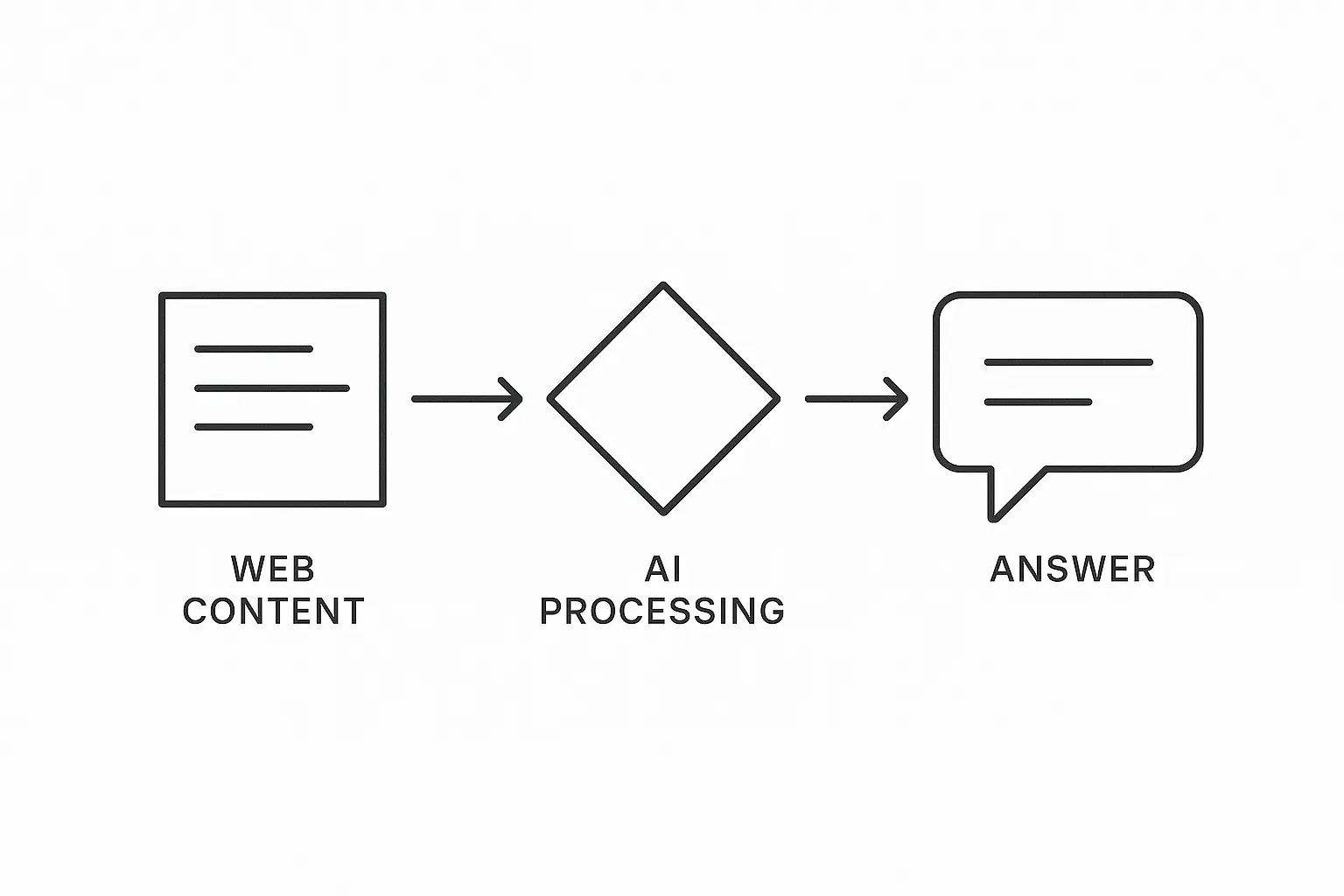
What Makes AI Systems Trust Your Content
Large language models analyze your content by looking at context, relevance, and authority signals — not traditional ranking factors. They want well-structured, factual content with clear sources and comprehensive coverage.
This means you need to write for AI comprehension first, human engagement second. Sounds backwards, but here’s the thing: content that AI understands well is usually clearer and more valuable for humans too.
Why Fresh Content Matters More Than Ever
You can’t just rely on that evergreen blog post from 2019. AI systems are pulling from real-time searches, which means both your historical authority and current relevance matter.
A financial advisor I work with learned this the hard way. Their comprehensive investment guide from three years ago was great, but AI systems stopped citing it once newer content appeared with updated market data and current examples.
Structuring Content That AI Can Actually Use
AI systems prefer content organized like a well-structured textbook — clear hierarchies, explicit relationships between concepts, and logical flow.
The way you organize information directly impacts whether AI can extract and cite your content effectively. Most businesses have great information that’s just formatted wrong for AI processing.
Making Your Content AI-Readable
Think of structured data like giving AI a cheat sheet about your content. Instead of making it guess what your article is about, you’re literally telling it: “This is a how-to guide about baking bread, written by Sarah who’s been a baker for 15 years.”
Quick AEO Content Checklist:
-
Lead with the direct answer in your first 50-60 words
-
Use question-based headings (What is X? How does Y work?)
-
Add FAQ schema markup to your pages
-
Include numbered lists and bullet points
-
Make your author credentials crystal clear
-
Cite your sources (AI loves this)
-
Update content regularly with fresh data
-
Write like you’re having a conversation
-
Structure information from general to specific
-
Link to related content on your site
Why Being Right Matters More Than Being Engaging
Here’s what I tell clients: AI systems prioritize accuracy over engagement. They want content with verifiable facts, clear sources, and expert backing.
Your content team needs to think more like journalists than marketers. Claims need data. Opinions need attribution. Everything needs to be fact-checkable.
This doesn’t mean boring content — it means trustworthy content that happens to be engaging.
Creating Content Flow That AI Can Follow
Information should flow logically from basic concepts to specific details. Use clear headings that mirror how people actually ask questions.
Instead of “Our Methodology” try “How We Help Companies Increase Revenue.” Instead of “Solutions Overview” try “What Problems Does This Solve?”
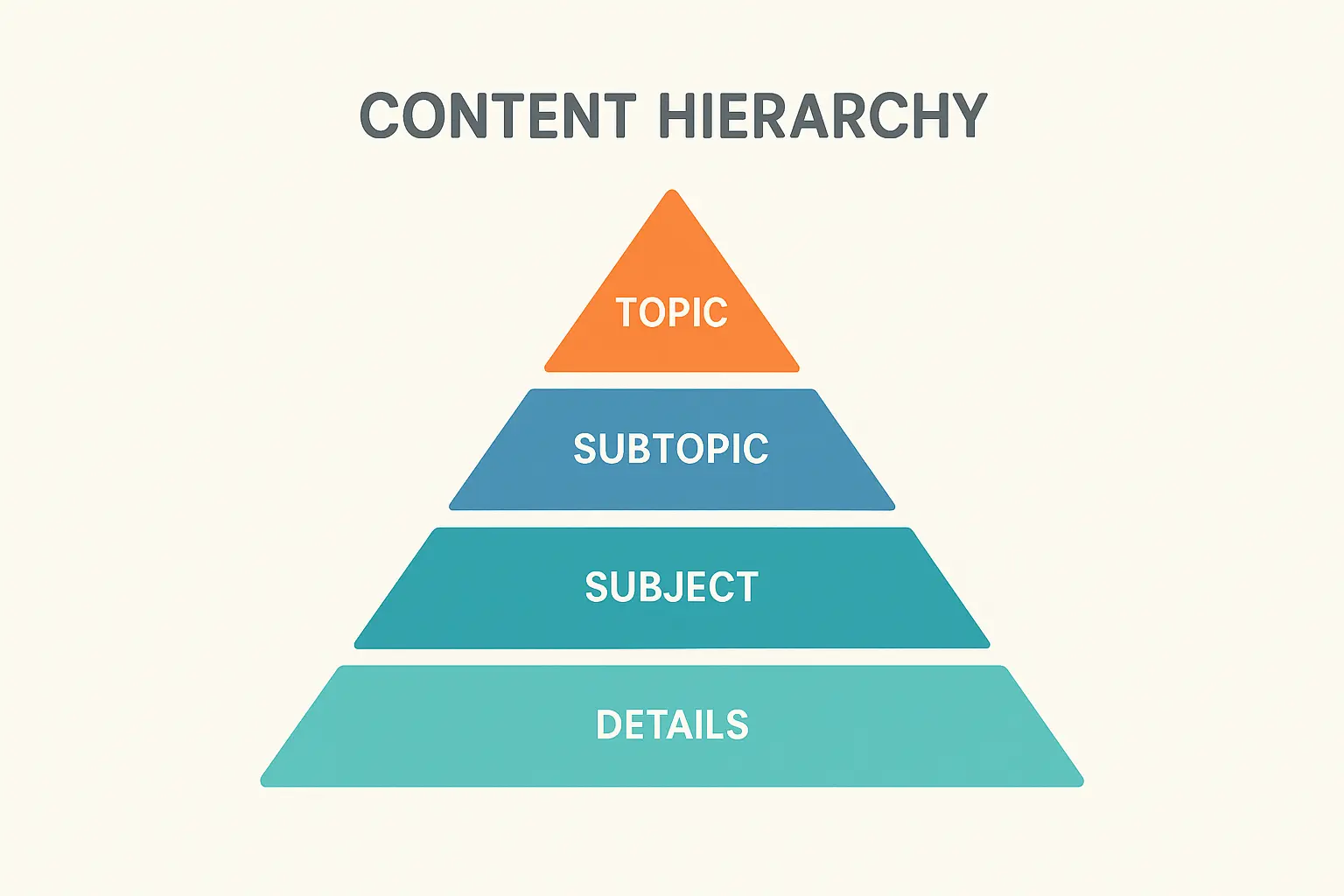
How AEO Actually Works (It’s Not What You Think)
The biggest mistake I see? Companies trying to do everything at once. AEO isn’t about rebuilding your entire content strategy overnight. It’s about systematically making your existing content more quotable and trustworthy.
Look, this stuff can feel overwhelming, but you don’t need to be perfect from day one. Start with what you have and make it better.
Auditing What You’ve Got
Before you optimize anything, you need to know where you stand. I’m talking about evaluating your content’s AI-readiness by looking at accuracy, structure, and citation potential.
Most businesses discover their content contains valuable information that’s just not formatted for AI extraction. Small changes can make a huge difference.
Checking Your Authority Signals
AI systems look for E-E-A-T signals: Experience, Expertise, Authoritativeness, Trustworthiness. They’re basically asking: “Should I trust this source enough to quote it?”
Quick Authority Audit:
Author Credentials:
-
Is there a detailed author bio?
-
Can you prove relevant expertise?
-
Is contact information easy to find?
-
Are credentials and social proof visible?
Content Quality:
-
Are claims backed up with data?
-
Are sources cited and linked?
-
Is the publication date recent?
-
Is everything factually accurate?
Trust Signals:
-
Do you have a comprehensive About page?
-
Is contact information accessible?
-
Do you have a privacy policy?
-
Is your site secure (SSL certificate)?
Analyzing Your Content Structure
Look at your existing content and ask: Does this directly answer questions? Are definitions clear? Can someone (or some AI) easily extract the key information?
A lot of businesses have great expertise buried in poorly structured content. The information is there, it’s just not accessible to AI processing systems.
Building Content Around Questions
This is where the magic happens. Instead of creating content around keywords, you’re creating content around the actual questions your audience asks AI systems.
Map your expertise to real questions: What is X? How does Y work? Why should someone care about Z? When is the best time to do A? Where can someone find B?
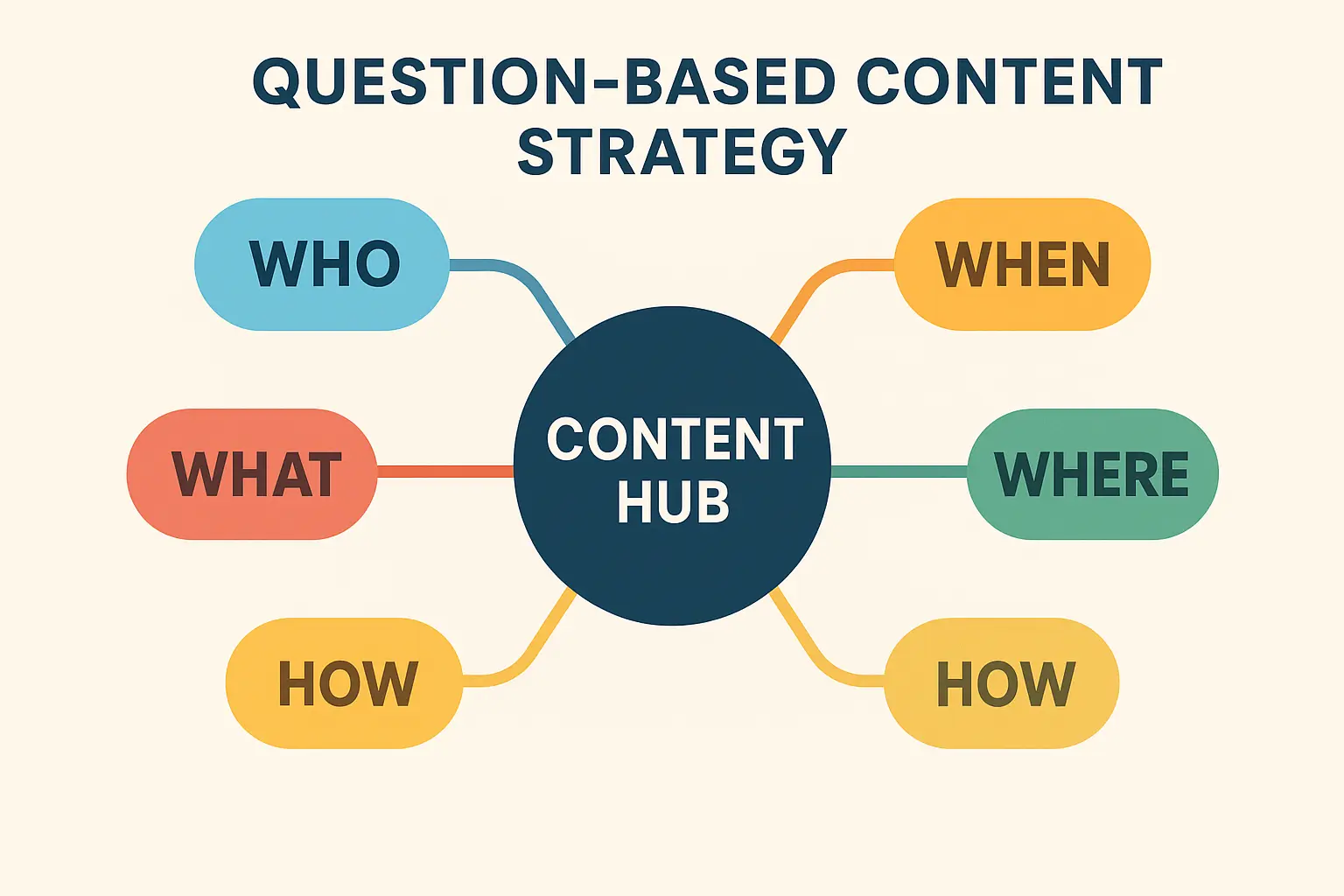
Mapping Content to Real Questions
Here’s how a financial services company might approach this:
-
“What is compound interest?” (clear definition with examples)
-
“How does compound interest work?” (step-by-step process)
-
“Why is compound interest important for retirement?” (benefits and outcomes)
-
“When should I start investing for compound interest?” (timing advice)
-
“Where can I invest to earn compound interest?” (specific recommendations)
Each piece provides immediate, quotable answers that AI systems can extract and reference.
Writing for AI Conversations
Structure your content to match how people actually talk to AI systems. Use natural language patterns and conversational tone.
Instead of “Our proprietary methodology leverages advanced analytics,” try “Here’s how we help companies figure out what’s working and what isn’t.”
AI systems are trained on conversational data, so content that sounds natural in conversation is more likely to be selected for AI responses.
Making Content Featured Snippet Ready
Optimize for both traditional featured snippets and AI-generated summaries by providing clear, quotable explanations right up front.
The good news? Most featured snippet optimization tactics work well for AEO too. Clear answers, good structure, and comprehensive coverage work for both.
The Nuts and Bolts (And How to Know It’s Working)
Here’s where most people get stuck: the technical stuff. But honestly, it’s not as complicated as it sounds. You just need to make your content accessible to AI crawlers and processing systems.
The measurement part is trickier because most SEO strategies don’t work, with most landing pages driving little to no traffic, and most SEO efforts often being w asted, with only a small number of strategies being highly impactful. This makes precise measurement critical for AEO success.
Technical Setup That Actually Matters
Technical optimization for AEO involves specific markup and content formatting that makes information easily accessible to AI systems.
These aren’t nice-to-haves — they directly impact whether AI can find, process, and cite your content.
|
Schema Type |
What It’s For |
Why AI Loves It |
|---|---|---|
|
FAQPage |
Question-answer sections |
Direct extraction of Q&A pairs |
|
HowTo |
Step-by-step guides |
Structured process information |
|
Article |
Main content pages |
Content categorization and context |
|
Speakable |
Voice-optimized content |
Voice assistant compatibility |
|
LocalBusiness |
Business information |
Local query responses |
|
Product |
Product descriptions |
E-commerce query answers |
Formatting That AI Can Actually Read
Format content with clear headings, bullet points, numbered lists, and tables that AI can easily parse.
The formatting that works best for AI processing usually improves human readability too. It’s a win-win.
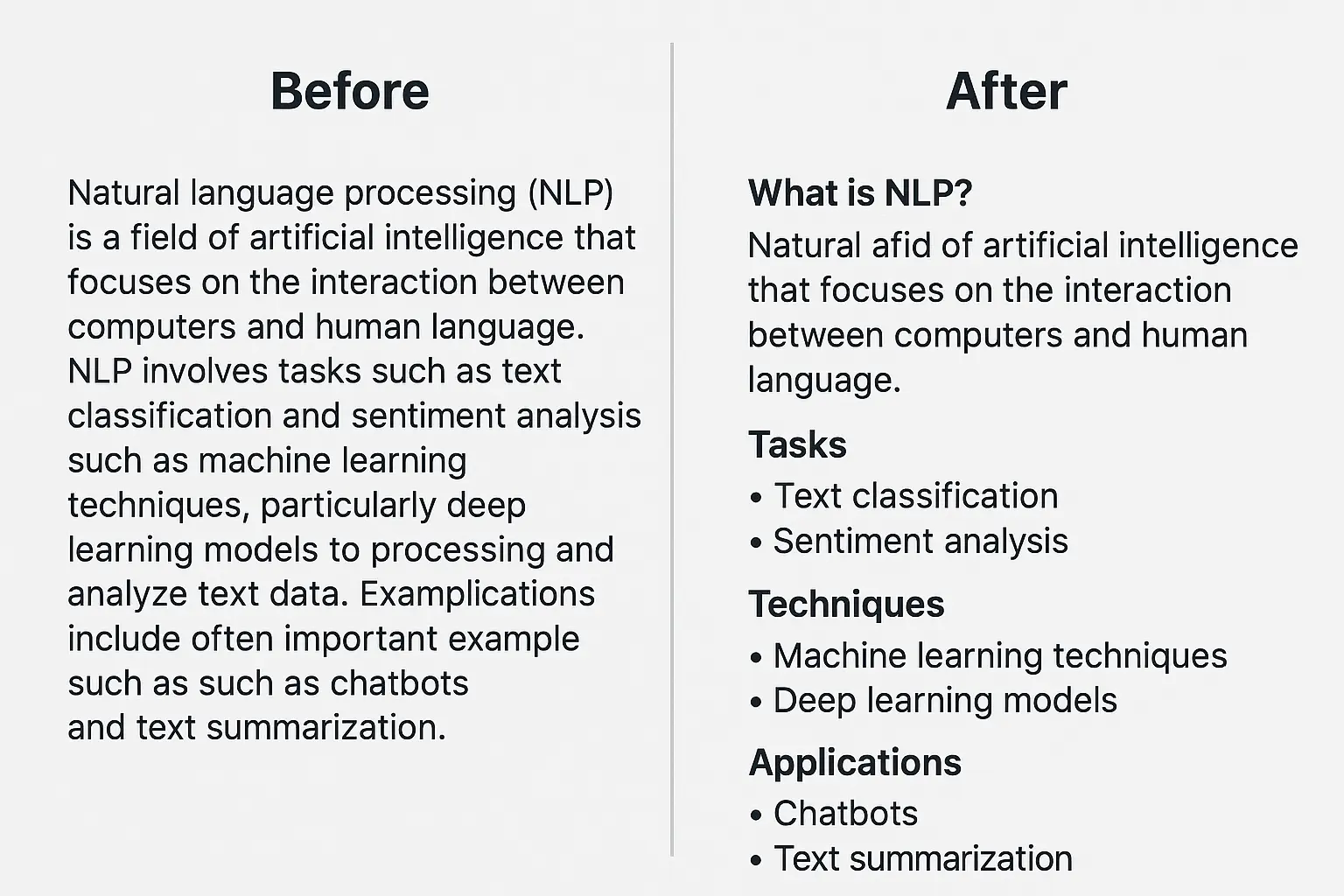
Setting Up Direct Data Access
Implement structured data feeds and API endpoints that let AI systems access fresh, accurate information directly from your systems.
This direct access approach can improve citation frequency by providing AI with real-time, authoritative data without having to parse and interpret web content.
Measuring What Actually Matters
Forget traffic and rankings for a minute. AEO success is about citation frequency, mention patterns, and brand authority in AI responses.
Traditional analytics don’t capture AI citation data, so you need new approaches to measurement.
Tracking Your Citations
Monitor how often your content appears as sources in AI responses across different platforms and query types.
What to Track:
-
Citation frequency across ChatGPT, Claude, Perplexity
-
Brand mentions in AI-generated responses
-
Share of voice for key topics in your industry
-
Competitor citation patterns
-
Featured snippet performance
-
“People Also Ask” appearances
-
Voice search visibility
-
Local AI response inclusion
-
Social platform AI integration
-
API data usage by AI systems
Understanding Brand Context in AI Responses
It’s not just about how often you’re cited — it’s about the context. Are you being presented as the expert? Are you associated with the right topics? Is your brand positioning consistent across AI responses?
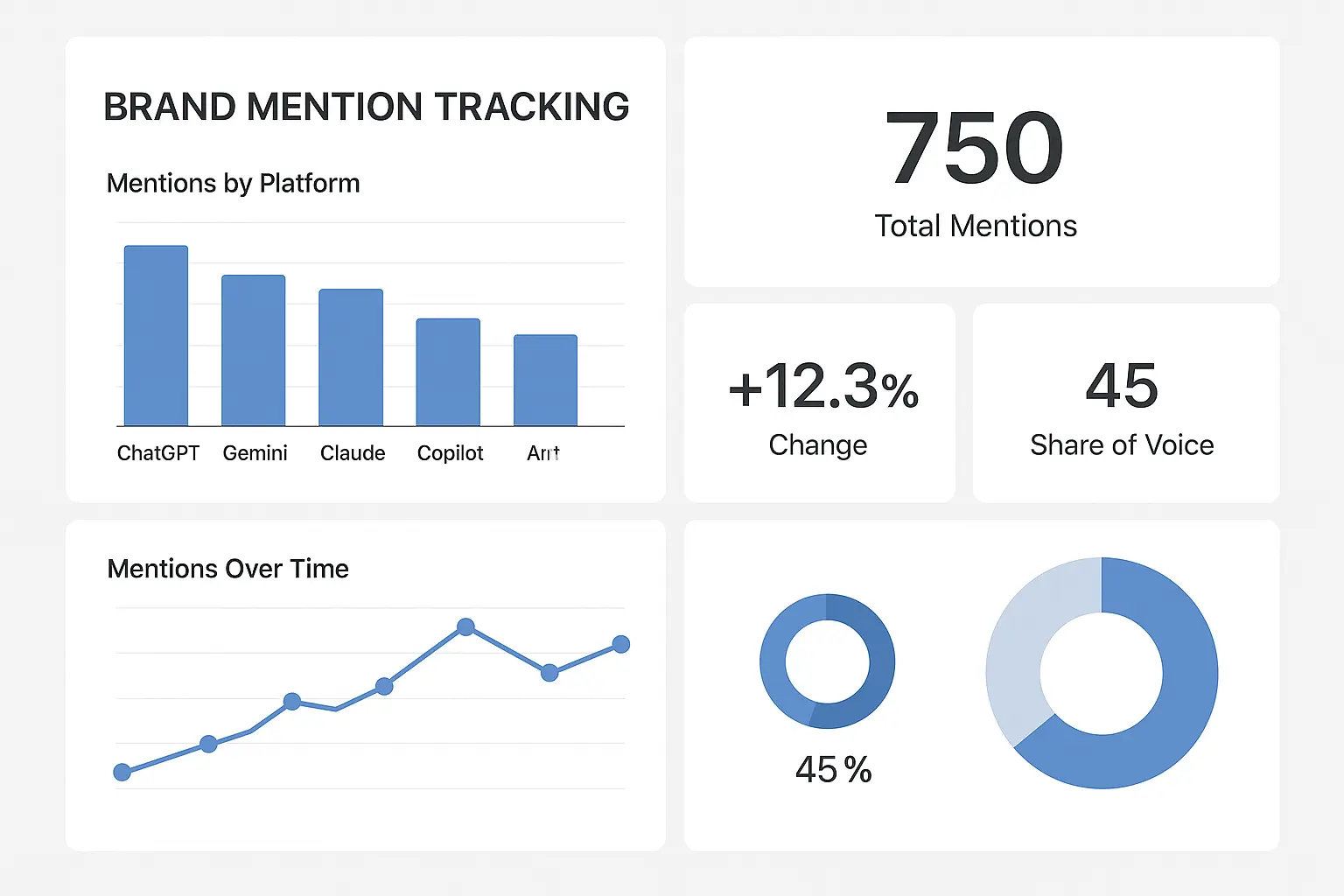
Advanced Strategies for Staying Ahead
As AI systems get more sophisticated, basic optimization won’t be enough. You need to think about where this technology is heading and prepare accordingly.
The strategic importance of advanced AEO is clear, as Santiago Durán, a clinical psychologist and senior marketer with senior positions at Google and Havas, presents The A.S.T.E.R. framework: Five Easy Principles of AEO (Answer Engine Optimization), introducing his exclusive A.S.T.E.R. framework (Answer, Structure, Trust, Engage, Refine) as a practical guide to ensure digital content is discoverable and citable by emerging answer engines.
Getting Ready for Multi-Modal AI
Future AI systems won’t just process text — they’ll understand images, videos, and audio content too. That means your optimization strategy needs to expand beyond written content.
This isn’t some distant future scenario. It’s happening now, and the businesses that prepare early will have a significant advantage.
Optimizing Visual Content for AI
Optimize images with descriptive alt text, captions, and surrounding context that help AI systems understand and describe visual content in their responses.
A home improvement company optimizing a kitchen renovation guide would include images with detailed alt text like “white quartz countertops with subway tile backsplash and stainless steel appliances in modern kitchen renovation,” surrounded by content explaining design choices, costs, and installation processes. This lets AI reference both the visual and textual information when answering related queries.
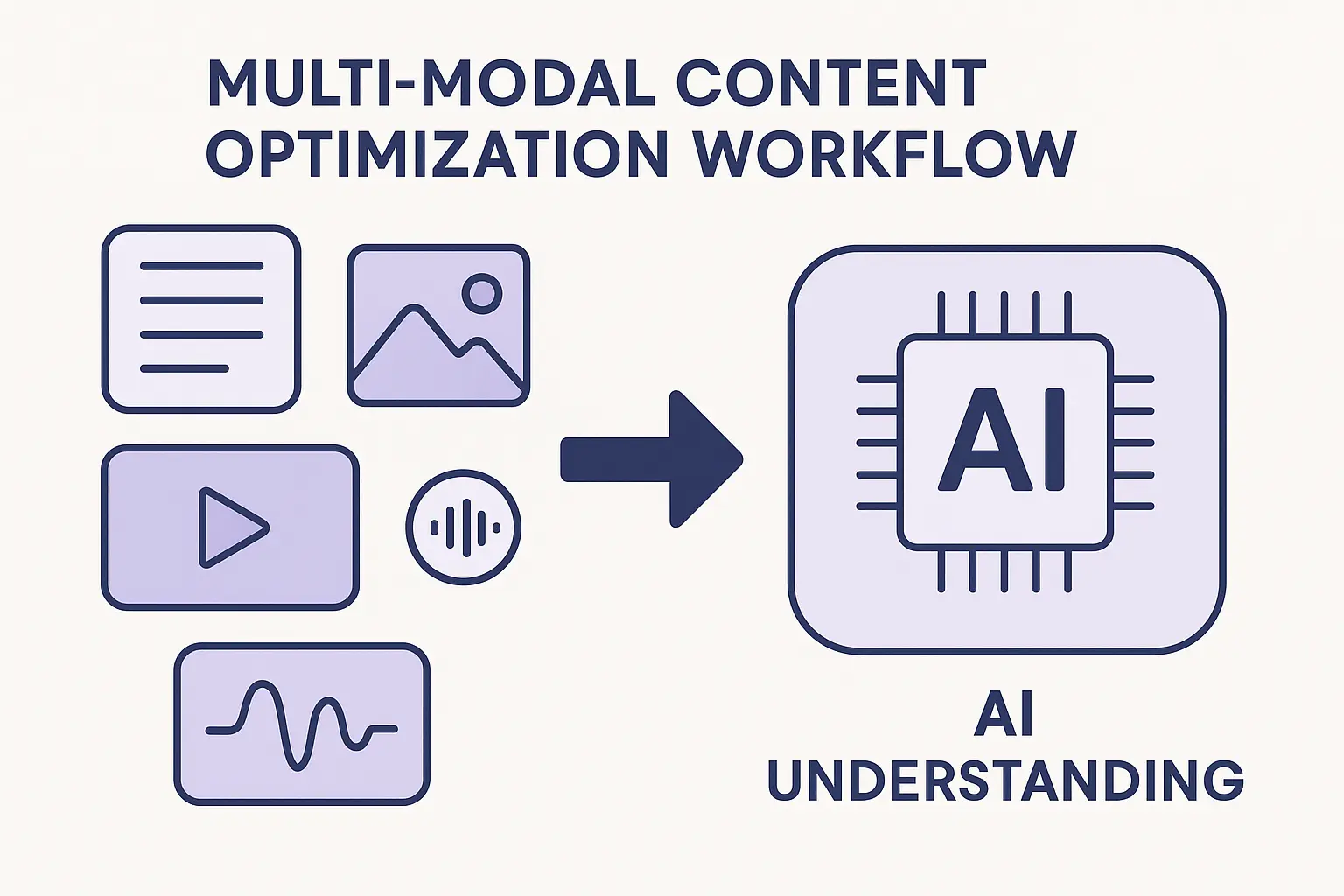
Making Video and Audio Content AI-Accessible
Structure video and audio content with transcripts, timestamps, and descriptive metadata that enable AI systems to extract and cite multimedia information.
Video and audio optimization requires comprehensive metadata and transcription that makes multimedia content searchable and citable by AI systems.
Preparing Interactive Content for AI Integration
Prepare interactive elements like calculators, tools, and dynamic content for AI integration by providing clear descriptions and usage instructions.
Interactive content optimization requires documentation that explains functionality and use cases in ways AI can understand and reference.
Understanding Your Competition in the AI Era
Understanding competitor AEO strategies and industry positioning in AI responses helps identify opportunities and gaps in your own approach.
Competitive intelligence for AEO means monitoring AI citations rather than traditional search rankings, providing new insights into content performance and market positioning.
Analyzing Competitor Citations and Success Patterns
Look at which competitors appear most frequently in AI responses for your target topics and figure out what content characteristics drive their success.
Competitor citation analysis reveals optimization opportunities and helps you understand what AI systems value in your specific industry.
Mapping Industry Authority Signals
Map the authority signals that AI systems recognize and prioritize in your industry, then develop strategies to build similar credibility markers for your brand.
Industry authority mapping reveals sector-specific optimization requirements that generic AEO strategies might miss.
Enterprise-Level AEO Implementation
Large organizations need specialized approaches that account for complex content hierarchies, multiple stakeholders, and distributed content creation across departments and regions.
Enterprise AEO requires systematic approaches and governance structures to ensure consistent optimization across large-scale content operations.
Establishing Content Governance for AEO
Set up some basic rules your team can follow to ensure all content creators understand AEO principles, from fact-checking requirements to proper citation formatting and authority attribution standards.
Enterprise AEO Governance Template:
Content Creation Standards:
-
Fact-checking protocols established
-
Source citation requirements defined
-
Author attribution guidelines set
-
Update schedules implemented
Technical Requirements:
-
Schema markup standards documented
-
Content structure templates created
-
API integration protocols established
-
Performance monitoring systems deployed
Team Training Components:
-
AEO principles workshop completed
-
Tool usage training provided
-
Quality assurance processes implemented
-
Performance review criteria established
Maintaining Cross-Platform Consistency
Maintain consistent messaging and factual accuracy across all digital touchpoints to reinforce authority signals that AI systems use for source credibility assessment.
Cross-platform consistency becomes more critical for AEO than traditional SEO because AI systems evaluate source credibility across multiple touchpoints and platforms.
Building Scalable Optimization Processes
Set up simple processes for optimizing large content volumes, including automated fact-checking, structured data implementation, and regular content audits for AI-readiness.
Scalable AEO processes require automation and systematic approaches that can handle enterprise content volumes while maintaining optimization quality.
Addressing International AEO Considerations
Account for regional AI system differences, local language nuances, and cultural context requirements when optimizing content for global AI visibility.
International AEO requires understanding regional AI platform preferences and local content optimization requirements that may differ significantly from domestic strategies.
Integrating AEO with Your Existing Marketing Strategy
AEO needs to work with your current SEO, content marketing, and paid advertising strategies, not replace them. This creates a comprehensive approach that addresses both traditional and AI-powered discovery methods.
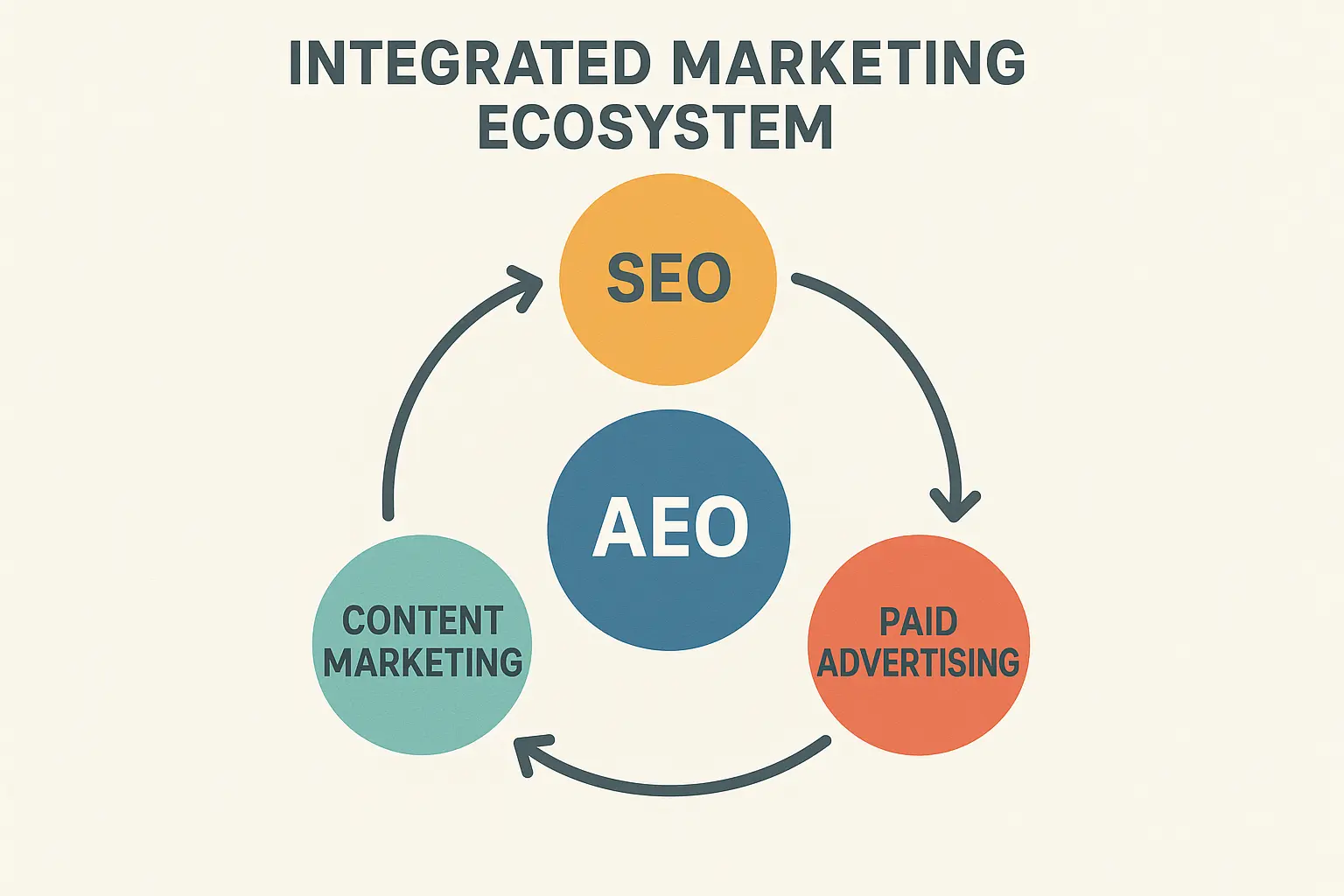
Creating Synergy Between AEO and Traditional SEO
Develop content strategies that satisfy both search engine crawlers and AI requirements, optimizing for featured snippets while ensuring AI citation potential.
AEO and SEO synergy requires content that performs well in both traditional search rankings and AI citation frequency, requiring balanced optimization approaches.
Evolving Your Content Marketing for AI
Transform existing content marketing efforts to emphasize question-answering formats, expert attribution, and factual depth that serves both human readers and AI processing needs.
Content marketing evolution for AI requires balancing human engagement with AI comprehension requirements, creating content that serves both audiences effectively.
Aligning Paid Media with AEO Strategy
Align paid advertising messaging with AEO-optimized content to create consistent brand representation across both paid and organic AI-generated responses.
Paid media alignment with AEO ensures consistent brand messaging across all touchpoints where potential customers might encounter your brand through AI-mediated interactions.
Where Most People Get Stuck (And How to Fix It)
I’ve helped dozens of companies implement AEO strategies, and I keep seeing the same obstacles pop up. The good news? Most of these challenges have straightforward solutions once you know what to look for.
Overcoming Technical Implementation Barriers
Many organizations struggle with the technical aspects of AEO implementation, including structured data complexity, content management system limitations, and integration challenges with existing marketing technology stacks.
These technical barriers often require custom development or third-party solutions, making implementation planning and budgeting critical for success.
Working with Legacy Systems
Older content management systems may require custom development or third-party solutions to implement proper structured data markup and AI-readable content formatting.
Legacy system limitations often require creative solutions and phased implementation approaches to achieve effective AEO without complete system overhauls.
Managing Resource Allocation Challenges
AEO requires ongoing content maintenance and fact verification that may strain existing content teams, necessitating process optimization and potential team expansion.
Resource allocation for AEO must account for both initial implementation costs and ongoing maintenance requirements that differ from traditional SEO resource needs.
Building Content Quality and Authority
Building the content quality and authority signals that AI systems prioritize requires systematic approaches to expertise demonstration, fact verification, and source attribution that many organizations lack.
Content quality for AEO requires higher standards than traditional content marketing, with emphasis on factual accuracy and expert attribution that many organizations must develop.
Implementing Expertise Verification Systems
Set up simple ways to double-check author credentials, fact-check content claims, and maintain editorial standards that meet AI authority requirements.
Expertise verification for AEO requires systematic approaches to credential verification and fact-checking that many content teams must develop from scratch.
Developing Source Attribution Protocols
Develop consistent citation and attribution practices that help AI systems understand content credibility while maintaining user readability and engagement.
Source attribution protocols for AEO must balance AI comprehension requirements with human readability, requiring careful protocol development and implementation.
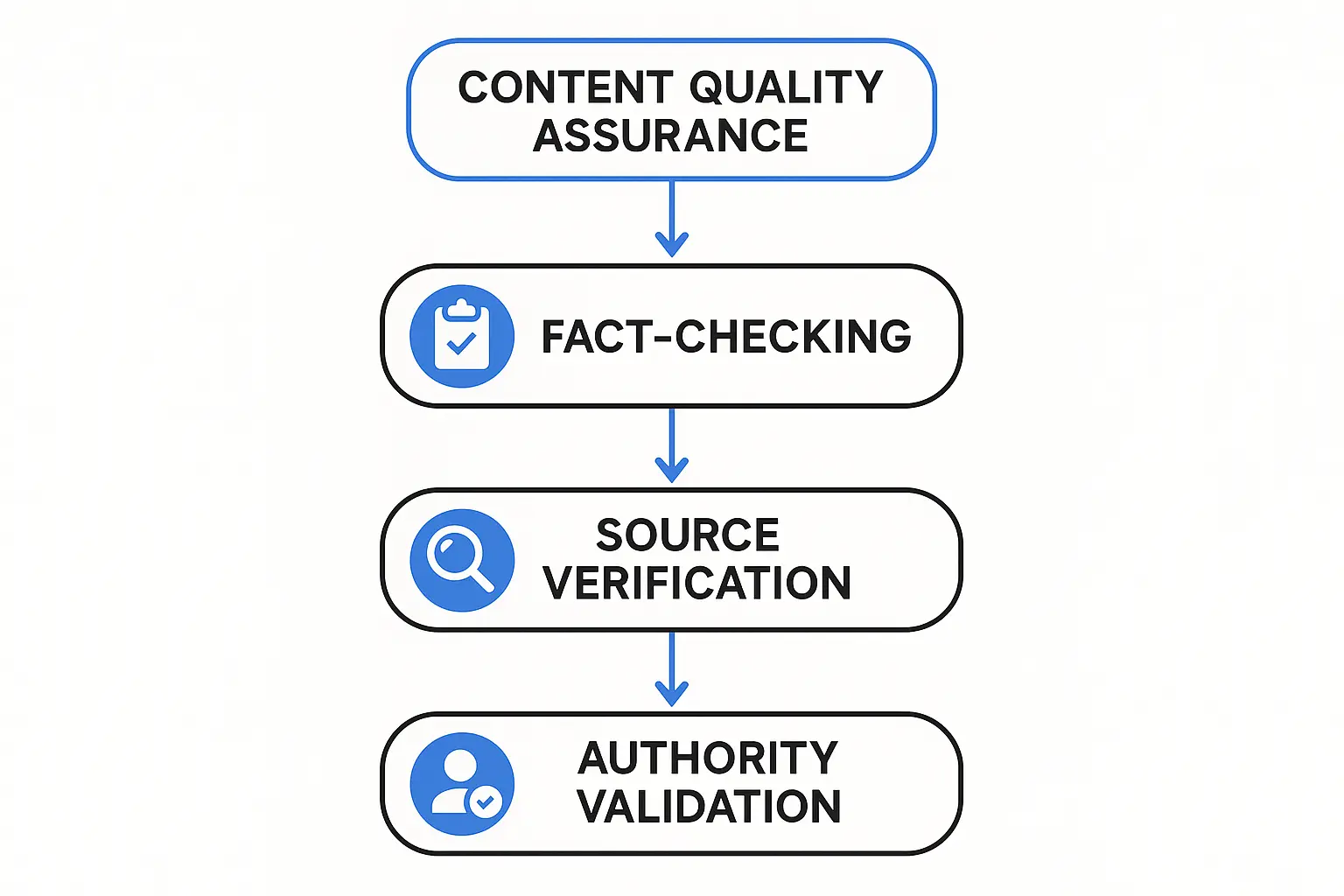
What This Means for Your Business
AEO isn’t just another marketing trend — it’s a fundamental shift in how people discover and consume information. The businesses that adapt their content strategies now will have a significant advantage as AI-powered search becomes the dominant way people find answers.
The key is starting with your existing content and systematically optimizing it for AI comprehension while maintaining the quality and engagement that serves your human audience. You don’t need to rebuild everything from scratch, but you do need to think differently about how you structure, attribute, and present information.
Remember, this is still early days for AEO. The platforms are evolving rapidly, and the best practices are still being established. The organizations that experiment now, measure their results, and adapt quickly will be the ones that dominate AI-generated responses in their industries.
The shift is happening whether you’re ready or not. The question isn’t whether you should optimize for AI — it’s how quickly you can start.



